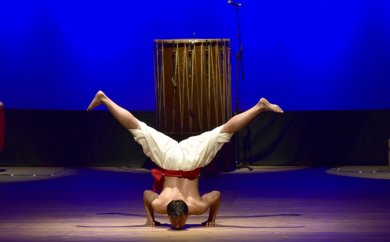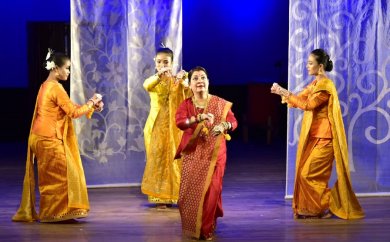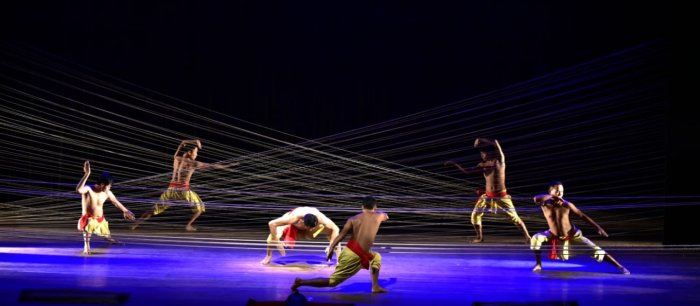
|   |

|   |
'Narta Sutra: The Dancing Thread' by Anjika - Nita Vidyarthi e-mail: nitavidyarthi@gmail.com Photos courtesy: Anjika February 17, 2019 'Narta Sutra-The Dancing Thread' recently staged at Kalamandir Kolkata by Anjika Centre for Manipuri Dance and Movement Therapy, was a sample of the spectrum of Manipuri dance blended into a new thought provoking, surprising mix that changes every day - the weaving, the fabric, literally and metaphorically. The Priti Patel production was a tribute to Mahatma Gandhi on his 150th birth anniversary by celebrating, honouring and supporting the tradition of handloom through Manipuri dance. It was creatively supported by Weavers Studio, Kolkata, well into its 25th year and its founder, Darshan Shah, whose passion for hand crafted textiles has not only led to the opening of this treasure trove of sophisticated traditional weaves but has also been working for the cause of craftsmen thus making them self-reliant. A series of definitely prescribed Manipuri dance movements in its traditional richness and restraint choreographed by the renowned dancer Priti Patel, mythology, folklore and rituals with a splash of colour, explored the story of textiles and their creators in Narta Sutra-The Dancing Thread. The spring and impulse of Narta Sutra stemmed from the agricultural economy of Manipur. Some of the agricultural plants and their produce are prominent offerings made at the Lai Haraoba festival - the ones important being the musaceous plants and the morus alba or the silkworm mulberry, bamboo and cotton too. Incidentally, Manipur is famous for its special fabrics like moiraing phee, leirum, raniphi and many more. 

 The finest muslin and silk came from the same navel from which sprung Brahma, the father of all living creatures. This thread was given to the weavers, so that they could weave cloth for the gods. Thus, fabric is the gift of Vishnu and all this expressed by subtle graceful step vocabulary.  Patel used the classical sequences and shaped them into kaleidoscopic, crystalline patterns. And to watch her dance with others amidst these shimmering lengths of fabrics was a great privilege. The sheen of antiquity on the soft cloth was heightened by luminescent afterglow lights than a lover's sigh, softer than a butterfly's wings. Its transparent simplicity lay in its subtle pull upon the imagination of the poets as expressed in 'The Silk-worm' by Rumi. And finally the journey ended in the silence of the looms, though only momentarily, for it emerged yet again in another form, in another time. Patel expressed all these with subtlety in her imaginative lyrical choreography to showcase the poignant story of the human spirit's triumph over adversity. The breathtaking agility of the martial arts artists, their acrobatic feats expressing agitation and the expertise of dhol cholom players attracted applause. A superb production, a memorable experience, "The Dancing Thread" can be seen again and again. A special mention for the invitation card nicely tucked in a mesh of thread resting on a slick bamboo frame resembling a loom. Dr. Nita Vidyarthi is a veteran critic of performing arts and writes on dance, music and theatre in leading publications. |